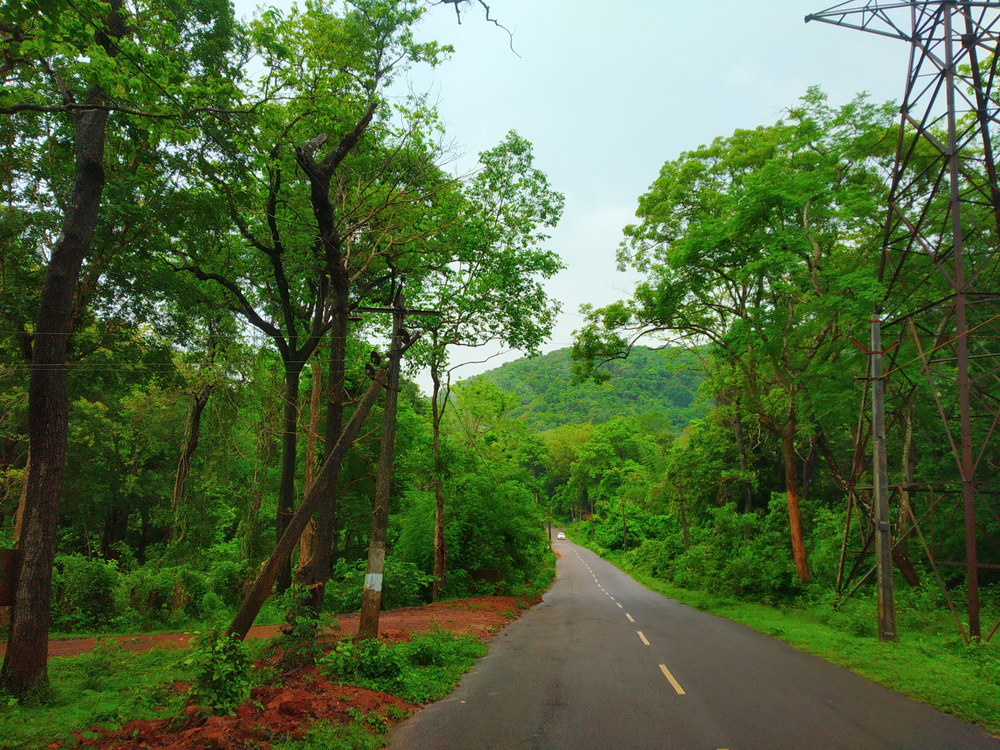Papikonda Overview
Papikonda National Park, locally known as పాపికొండ జాతీయ ఉద్యానవనం (Papikonda Jatiya Udyanavanam) in Telugu, is a sprawling expanse of wilderness located in the Eastern Ghats of India, primarily in the states of Andhra Pradesh and Telangana. Covering an area of approximately 412 square miles (1,068 square kilometers), the park is nestled along the banks of the Godavari River, a lifeline for the ecosystems and communities surrounding it. Its geographical coordinates place it near the picturesque town of Rajahmundry, with the lush, undulating terrain forming a breathtaking tapestry of hills, valleys, and riverine landscapes.
Papikonda’s terrain is a blend of steep hills, rolling valleys, and expansive river systems. The park’s elevation ranges from low-lying plains to rugged hilltops, with the Eastern Ghats creating a dramatic backdrop. The Godavari River flows majestically through the park, forming serene lagoons and sandy banks. The vegetation within the park is equally diverse, ranging from moist deciduous forests to evergreen patches. Dominant tree species include teak, rosewood, and terminalia, with occasional bamboo groves adding to the biodiversity. The dense canopy of the forest is interspersed with open grasslands, creating habitats that support a vast array of flora and fauna.
Wildlife thrives in Papikonda National Park, making it a haven for nature enthusiasts. Mammals such as leopards, sloth bears, and Indian gaurs are some of the park’s iconic residents. The elusive tiger also roams these forests, though sightings are rare. Smaller mammals like sambar deer, wild boars, and civets add to the diversity. Birdlife is particularly abundant, with species like Malabar pied hornbills, gray-headed fish eagles, and oriental bay owls frequently spotted. Papikonda is a recognized habitat for migratory birds, including river terns and painted storks, which flock to its wetlands during specific seasons.
The park is celebrated for its scenic beauty and tranquil settings, making it a favorite among eco-tourists and adventurers. A highlight of any visit is a boat ride along the Godavari River, which offers sweeping views of the surrounding forests and hills. The towering Papikonda Hill, from which the park derives its name, is a popular attraction for hikers and photographers seeking panoramic vistas. The park is also home to ancient tribal communities, providing a cultural dimension to its natural allure. Tribal art and traditions enrich the visitor experience, offering a glimpse into sustainable living practices.
Visitors can explore Papikonda through guided treks, wildlife safaris, and river cruises. These activities are not only immersive but also help raise awareness about the park’s delicate ecosystems. However, conservation challenges persist. Deforestation, encroachment, and the construction of the Polavaram dam have posed significant threats to the park’s integrity. Despite these challenges, the park management, supported by local and national conservation bodies, has made strides in habitat restoration and wildlife protection. Initiatives like afforestation and community engagement programs have shown promising results, balancing ecological preservation with human development.










































































